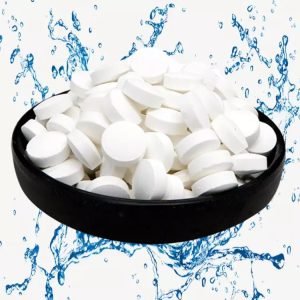High-Speed Data Transmission with QSFP28 Passive Cables
# High-Speed Data Transmission with QSFP28 Passive Cables
## Introduction to QSFP28 Passive Cables
In today’s data-driven world, the demand for high-speed connectivity solutions continues to grow exponentially. QSFP28 passive cables have emerged as a reliable and cost-effective solution for high-speed data transmission in various networking environments. These cables offer a simple yet powerful way to connect networking equipment without the need for active components.
## What Are QSFP28 Passive Cables?
QSFP28 passive cables are direct-attach copper cables that use the Quad Small Form-factor Pluggable 28 (QSFP28) interface. These cables are designed to support data rates of up to 100 Gbps (4×25 Gbps) over short distances, typically up to 5 meters. Unlike active optical cables, passive cables don’t contain any signal processing electronics, making them more affordable and power-efficient.
### Key Features of QSFP28 Passive Cables
– High-speed data transmission (100Gbps)
– Low power consumption
– Cost-effective solution
– Plug-and-play installation
– Backward compatible with QSFP+ ports
– Available in various lengths (typically 1m to 5m)
## Advantages of Using QSFP28 Passive Cables
QSFP28 passive cables offer several significant benefits for data center operators and network administrators:
### Cost Efficiency
Since passive cables don’t require any active components or optical transceivers, they are significantly more affordable than active optical solutions. This makes them ideal for budget-conscious deployments where high-speed connectivity is needed over short distances.
### Power Efficiency
Without active components, QSFP28 passive cables consume minimal power compared to their active counterparts. This contributes to lower overall power consumption in data centers, helping to reduce operational costs and environmental impact.
### Reliability and Durability
Passive copper cables are generally more robust than optical solutions, with better resistance to physical stress and environmental factors. They don’t require the careful handling that optical fibers demand, making them more suitable for certain deployment scenarios.
## Common Applications of QSFP28 Passive Cables
QSFP28 passive cables find applications in various networking scenarios:
– Data center interconnects between switches and servers
– High-performance computing clusters
– Storage area networks (SANs)
– Network interface card (NIC) to switch connections
– Short-distance backbone connections
## Choosing the Right QSFP28 Passive Cable
When selecting QSFP28 passive cables for your deployment, consider the following factors:
### Cable Length
Passive copper cables are best suited for short-distance connections (typically up to 5 meters). For longer distances, active optical cables or fiber optic solutions might be more appropriate.
### Compatibility
Ensure the cables are compatible with your specific networking equipment. While QSFP28 is generally backward compatible with QSFP+, it’s always good practice to verify compatibility with your hardware manufacturer.
### Quality and Certification
Choose cables from reputable manufacturers that meet industry standards. Look for certifications like IEEE 802.3bj and RoHS compliance to ensure quality and environmental safety.
## Future of QSFP28 Passive Cables
As data rates continue to increase and networking technologies evolve, QSFP28 passive cables remain a relevant solution for many applications. While newer technologies like QSFP-DD and OSFP are emerging for higher speeds, QSFP28 passive cables will continue to serve as a cost-effective solution for 100G connectivity in the foreseeable future.
For organizations looking to implement high-speed networking without breaking the bank, QSFP28 passive cables offer an excellent balance of performance, reliability, and affordability. Their simplicity and effectiveness make them a go-to solution for many data center and enterprise networking needs.
Keyword: qsfp28 passive cable
